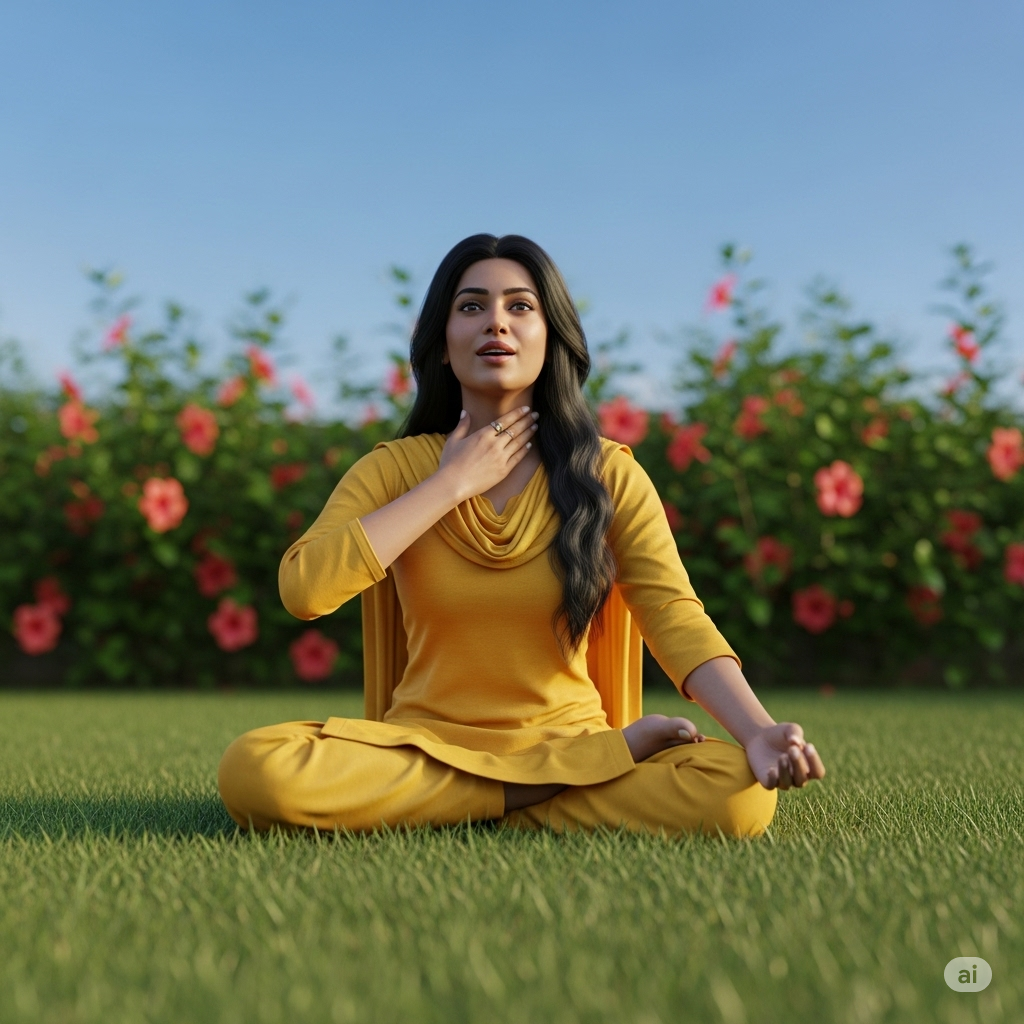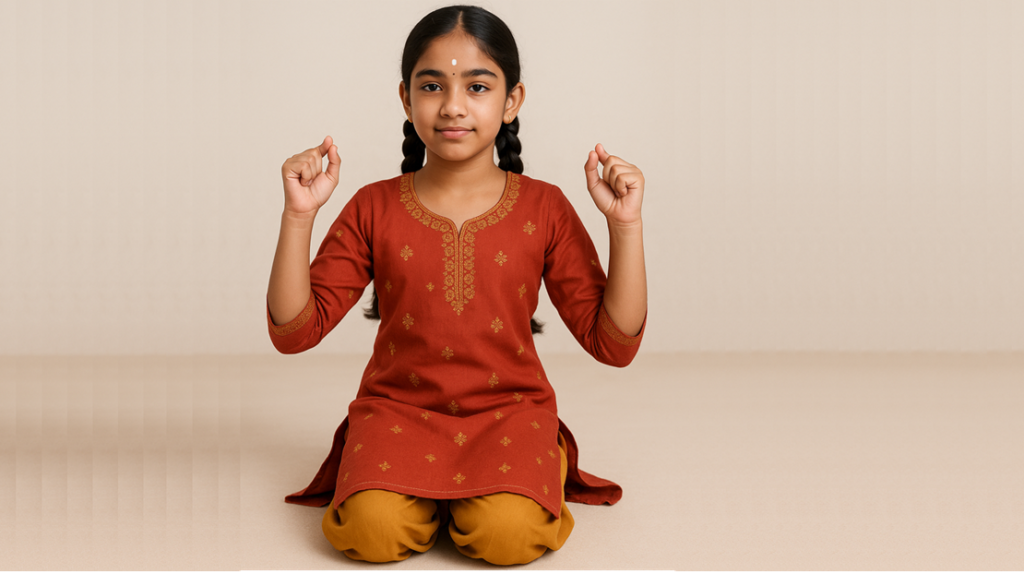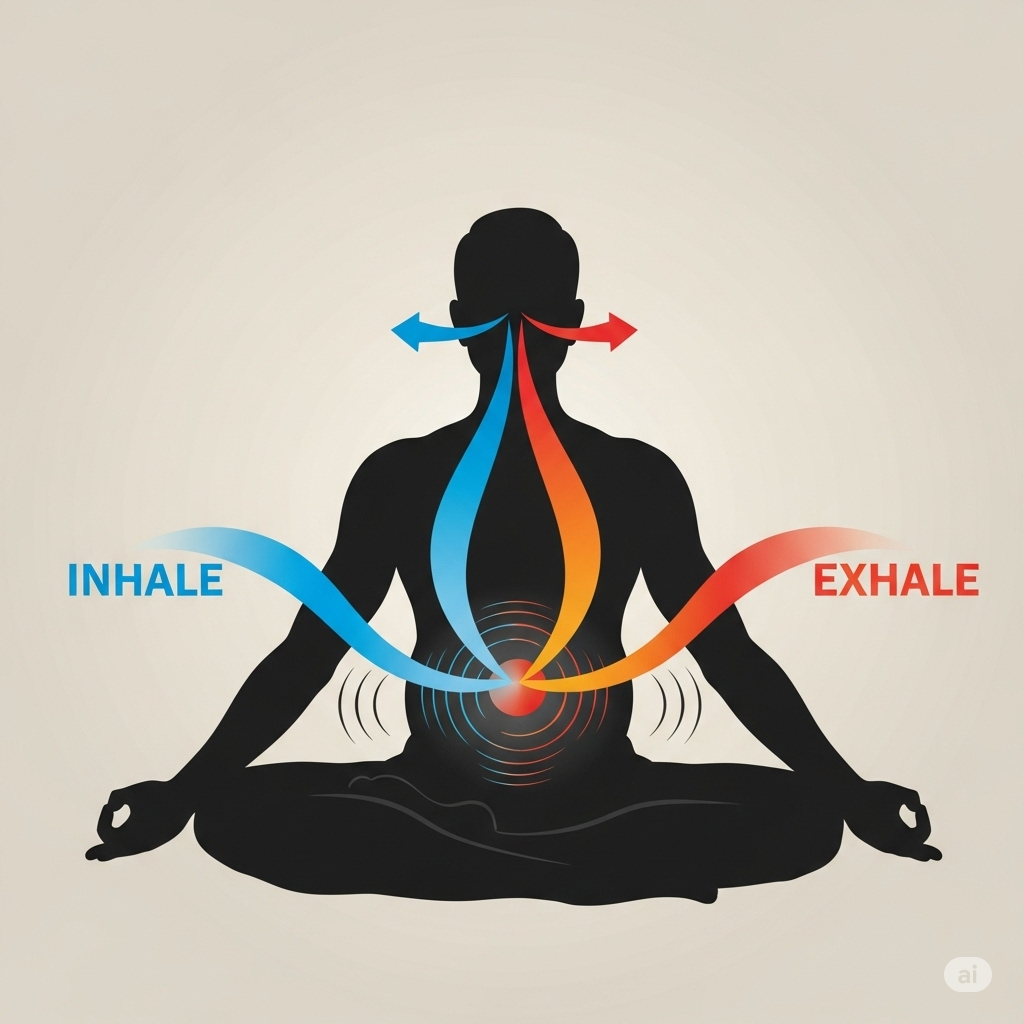Ujjayi (Ujjeyi) is a form of diaphragmatic breathing where the glottis is closed by constricting the throat during inhalation and exhalation. Let us understand the ujjayi (ujjeyi) – (ud = root + jaya = victorious) prāṇāyāma technique and its benefits.
The Ujjayi (Ujjeyi) technique explained in easy steps
To prepare for the ujjayi (ujjeyi) prāṇāyāma:
- First, sit comfortably in padmāsana, sukhāsana, or vajrāsana. Keep your back erect.
- Next, keep your mouth closed. Then, press the tongue to the roof of the mouth to close the circuit of prāṇa flow.
- Following this, close the glottis and tighten the throat.
- Lastly, place your hands in the chin or chinmaya-mudra.
There are two parts to ujjayi (ujjeyi).
The first part covers diaphragmatic breathing.
- Now, keeping the belly relaxed, draw the air in using the diaphragm.
- Remember, when the diaphragm reaches its bottom position, it relaxes the abdomen. The lower abdomen distends to its maximum capability.
- Also, the breathing sensation should be experienced at the throat.
- Importantly, focus on the centre of the viśuddhi-cakra and at the bottom of the abdomen at the pubis.
- Finally, exhale to completely evacuate the lungs.
The second part covers breathing through a tightened throat (constricted glottis).
- The glottis is the opening between the vocal chords in the larynx. During this procedure, the throat is tightened when the breathing action occurs resulting in a “rushing sound”, like the sound of the ocean.
- As breathing progresses, the flow through the tightened throat should be kept steady. Consequently, the abdominal and diaphragm pressures should be managed without unduly stressing either area.
What are the variations in ujjayi (ujjeyi) prāṇāyāma?
There are multiple variations in this prāṇāyāma;
a- Variation 1 – include kumbhaka (holding) in the process.
b- Variation 2 – do ujjeyi with kumbhaka and jalandhara-bandha in the process.
c- Variation 3 – add kumbhaka, jalandhara-bandha and mūl̄a-bandha to the process.
The manifold benefits of this prāṇāyāma variant
The direct benefit of ujjayi (ujjeyi) is strengthening of the diaphragm, glottis, and epiglottis. Consequently, this procedure is very useful in overcoming snoring. Also, ujjayi (ujjeyi) is very useful in improving thyroid functioning, acting in support of sarvāṅgāsana and viparīta-karaṇī.
Ujjayi (Ujjeyi) is a variation of the valsalva manoeuvre. In the valsalva manoeuvre, the mouth is blocked, the nose is closed, and the breath is forced out, releasing pressure in the eustachian tube. Therefore, this prāṇāyāma improves cardiac and upper respiratory tract health.
Finally, ujjayi (ujjeyi) is particularly useful in treating psychosomatic stress. In a stressful situation, the individual’s breathing becomes shallow and rapid. Consequently, the throat gets constricted. This increases the pressure within the pharyngeal and aural cavity. This leads to an increase in the pressure in the eustachian tube or middle ear. Therefore, the practice of ujjayi (ujjeyi) will result in an equalisation of middle ear pressure with the eustachian tube.
Hatha Yoga Pradeepika on ujjayi (ujjeyi) (Chapter 2, verse 51 to 53)
Ujjayi (ujjeyi) – Close the nāḍi in the throat and draw in air such that it goes touching the throat to the chest while making a noise in passing.
Perform kumbhaka and exhale through the idā (left nostril). This removes śleṣma (phlegm) in the throat and increases gastric fires.
It destroys the defects of the nāḍi, the doṣas (doṣhas), and dropsy. One can perform the Ujjayi (Ujjeyi) in all conditions, even while walking or sitting.


